Although I use Google Docs a lot on a daily basis, it’s not the only office suite I use. There are many times during the day when I have to switch to a locally installed office suite to do certain tasks. For example, when I collaborate with writers who use Microsoft Office and the formatting does not pass between .docx files and Google Docs. In these situations, I depend on a free, open-source office suite called LibreOffice.
With LibreOffice, enjoy 6 free, open source, powerful, cross-platform and practical office tools, rivaling the biggest office suites.
- Downloads: 22
- Release date : 08/18/2022
- Author : The Document Foundation
- Licence : Free software
- Categories:
Office automation - Operating system : Linux – 32-bit Windows – XP/Vista/7/8/10/11 – 64-bit Windows – XP/Vista/7/8/10/11 – macOS (Apple Silicon) – macOS (Intel)
I have been using LibreOffice for a long time and have found it to be as good a tool as any other on the market. Best of all, it pairs really well with Microsoft Office, so you can collaborate on a document any way you want without anyone noticing the difference.
The LibreOffice suite includes:
- Writer for documents;
- Calc for spreadsheets;
- Print for presentations;
- Draw for drawings;
- Formula to create formulas;
- Base for databases.
LibreOffice includes options that allow you to switch from a ribbon interface to a traditional menu interface (or a subtle mix of the two). This office suite is free and can be installed on as many computers as you wish. There are versions for Linux, macOS and Windows – and it’s easy to install, as you’ll see.
The only thing you will need is a macOS device (MacBook or iMac).
Installing LibreOffice
1. Download the installer
You cannot install LibreOffice from the App Store. Instead, open your default web browser and point it to www.libreoffice.org. Click on Download now. You then access the download page.
If your browser should normally automatically detect your configuration, be careful to download the file corresponding to the hardware architecture of your device. If it is an older device, you must select macOS (Intel). If it’s a newer device, you’ll want to select macOS (Apple Silicon). Once you have made your selection, click To download, and the file will be saved to your hard drive. You will be prompted to allow the download. So click on To allow.
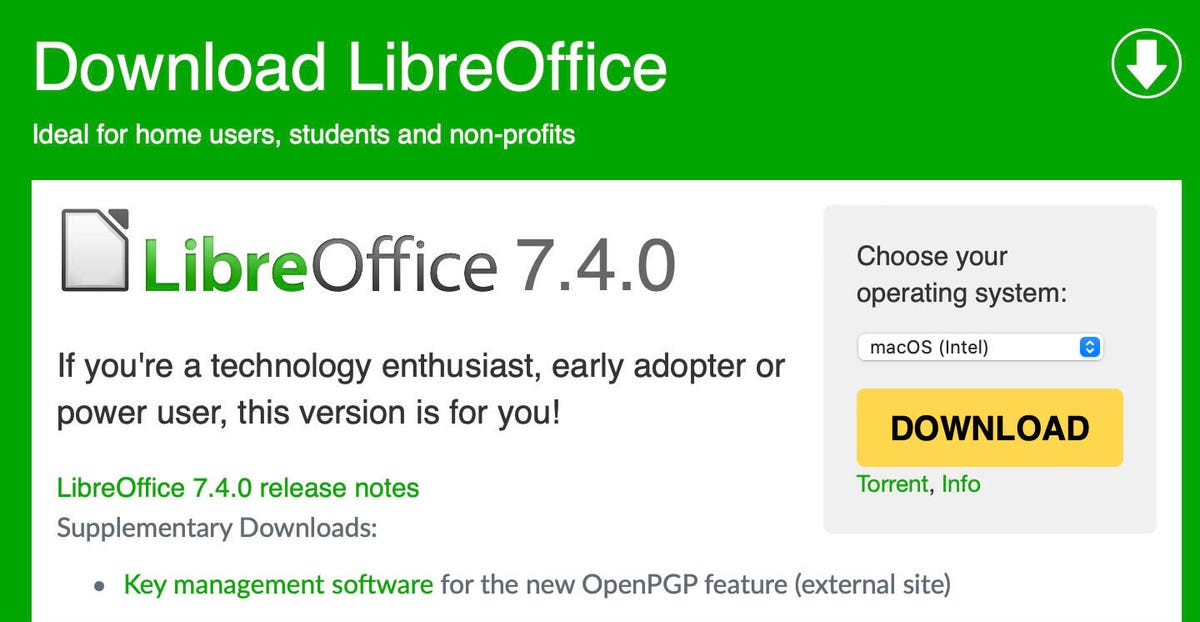
Picture: Jack Wallen.
2. Install LibreOffice
Depending on the speed of your network connection, the download will take between 2 and 10 minutes. Once the download is complete, expand the shortcut Downloads in your dock and click on the LibreOffice entry.
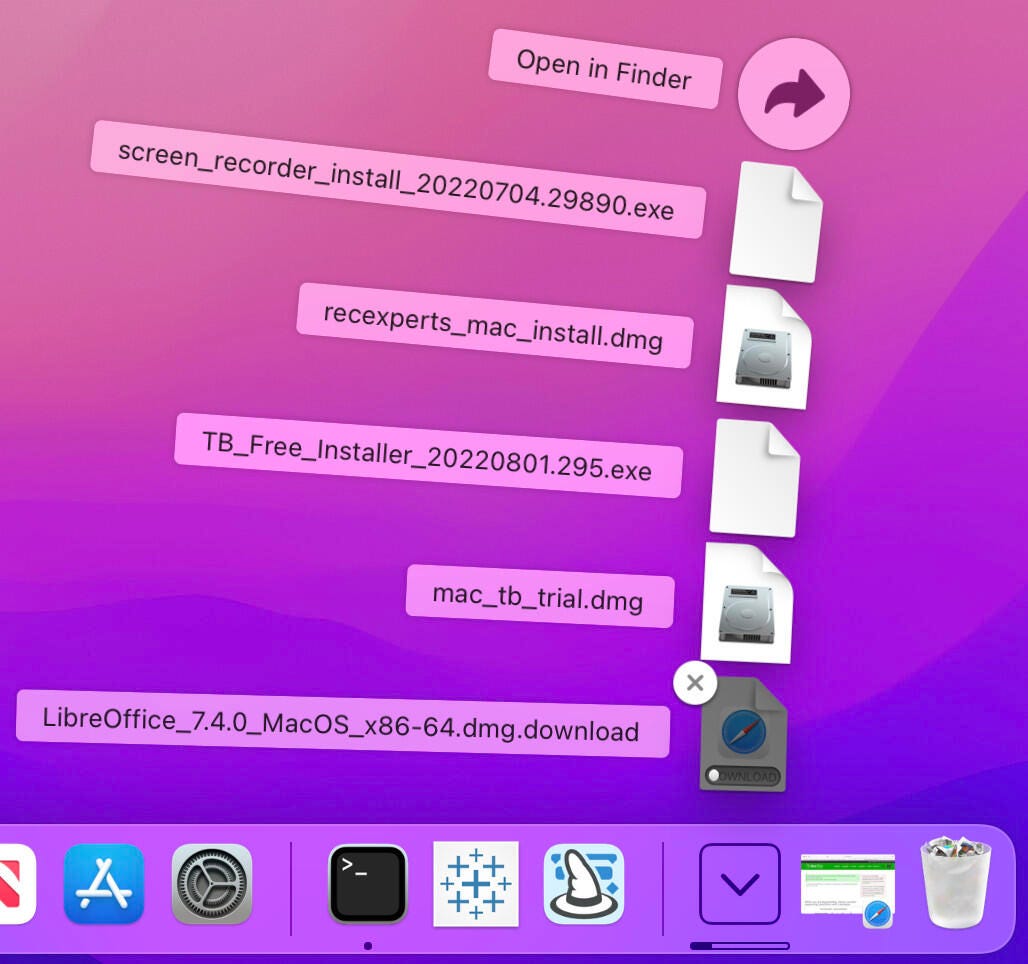
Picture: Jack Wallen.
In the window that opens, drag the LibreOffice icon to the Applications folder icon.
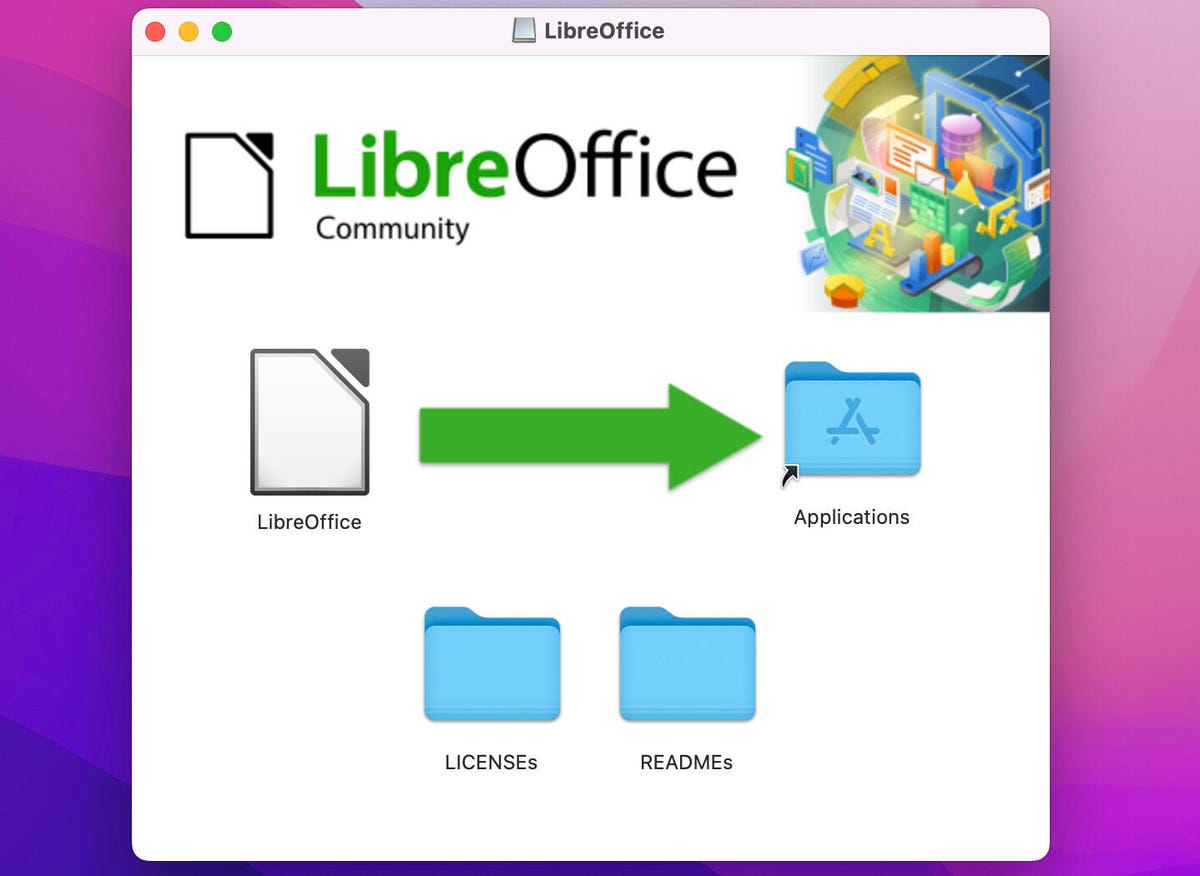
Picture: Jack Wallen.
3. Delete the installer file
Once the installation is complete (this will take about a minute), close the installer, right-click on the LibreOffice disk mounted on the desktop and select Eject.
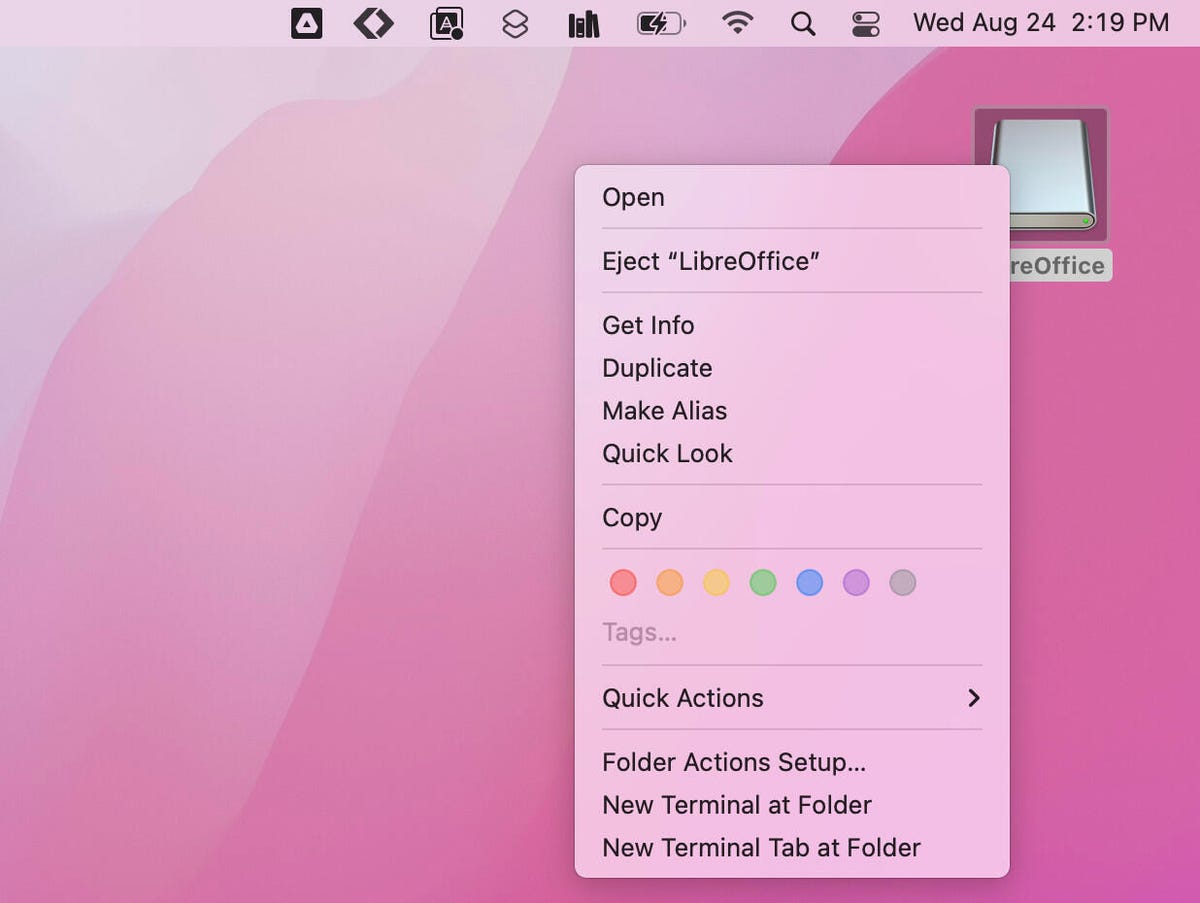
Picture: Jack Wallen.
How to open LibreOffice
1. Open Launchpad
Unlike installing LibreOffice on Linux (where you can open Writer, Calc, Impress, Draw, Formula, and Base separately), you need to open the main LibreOffice application on macOS. To do this, click Launchpad and type LibreOffice. Click on the LibreOffice icon to open the office suite.
You will be prompted to allow an unknown application to run.
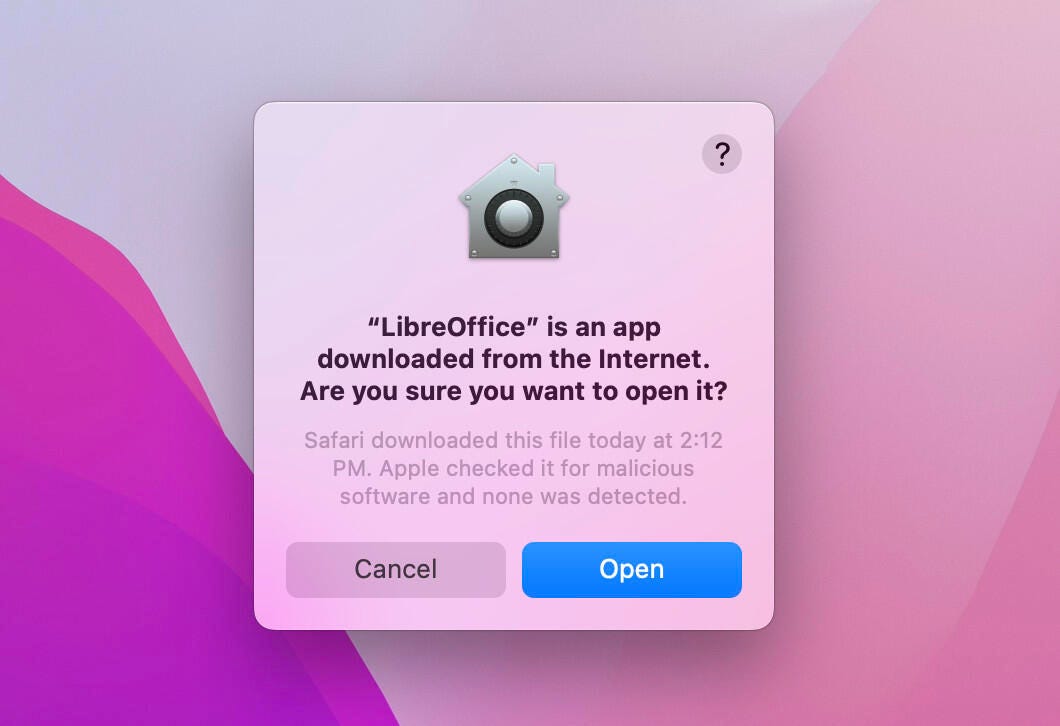
Picture: Jack Wallen.
Click on Open and LibreOffice will finally open.
2. Create a new file
Once LibreOffice is open, select the type of file you want to create (in the left panel) or click on Open a file to open a document that you have already saved to your disk.
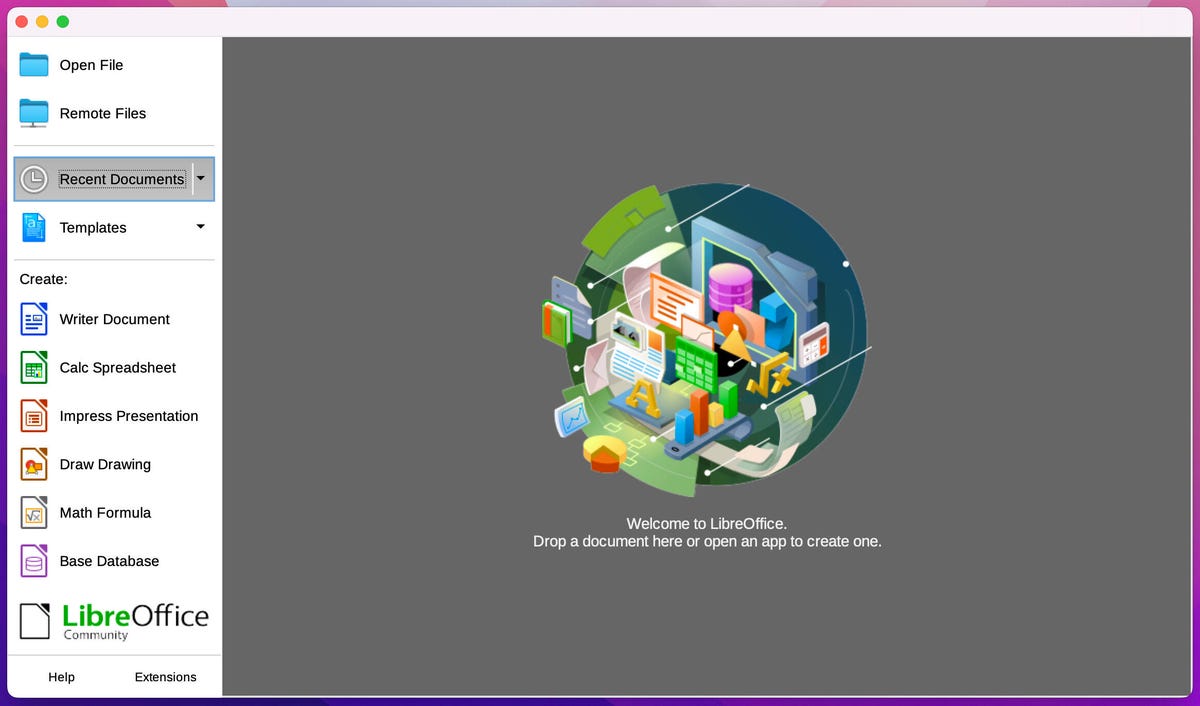
Picture: Jack Wallen.
There you go, it’s that easy to install and get started with LibreOffice on macOS.
Source: ZDNet.com
